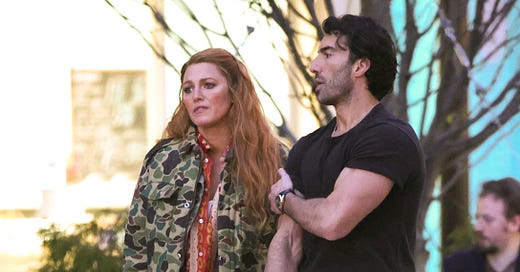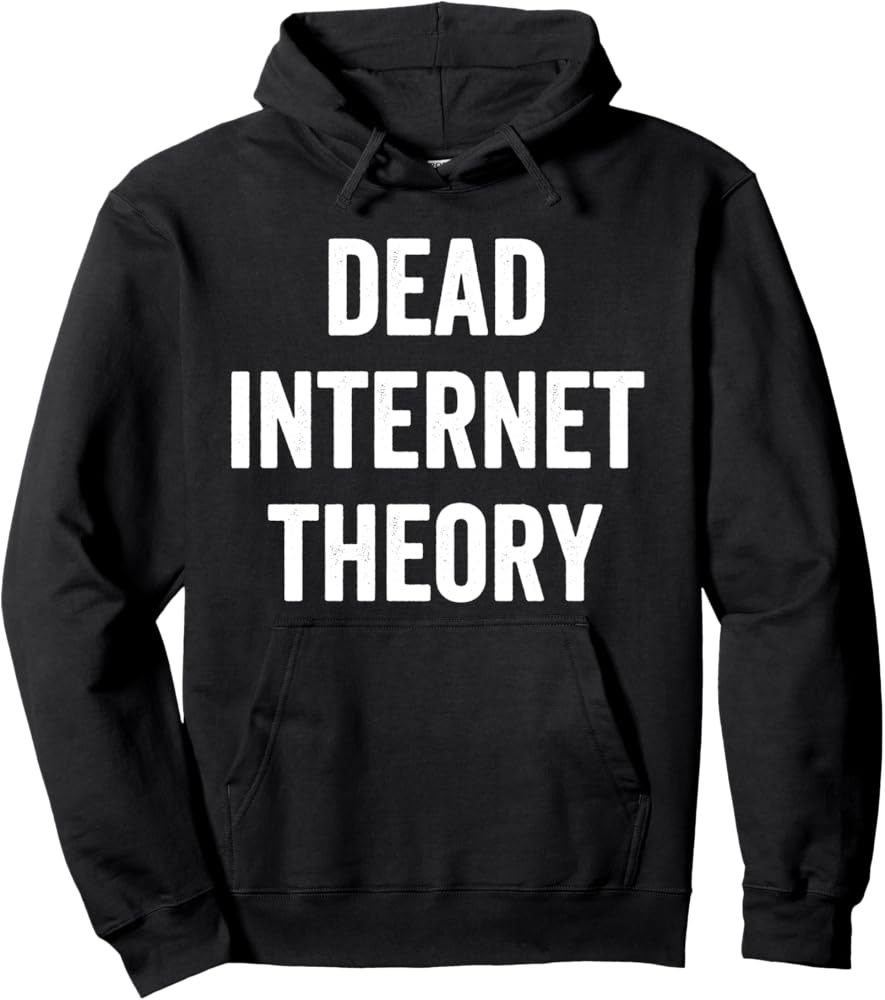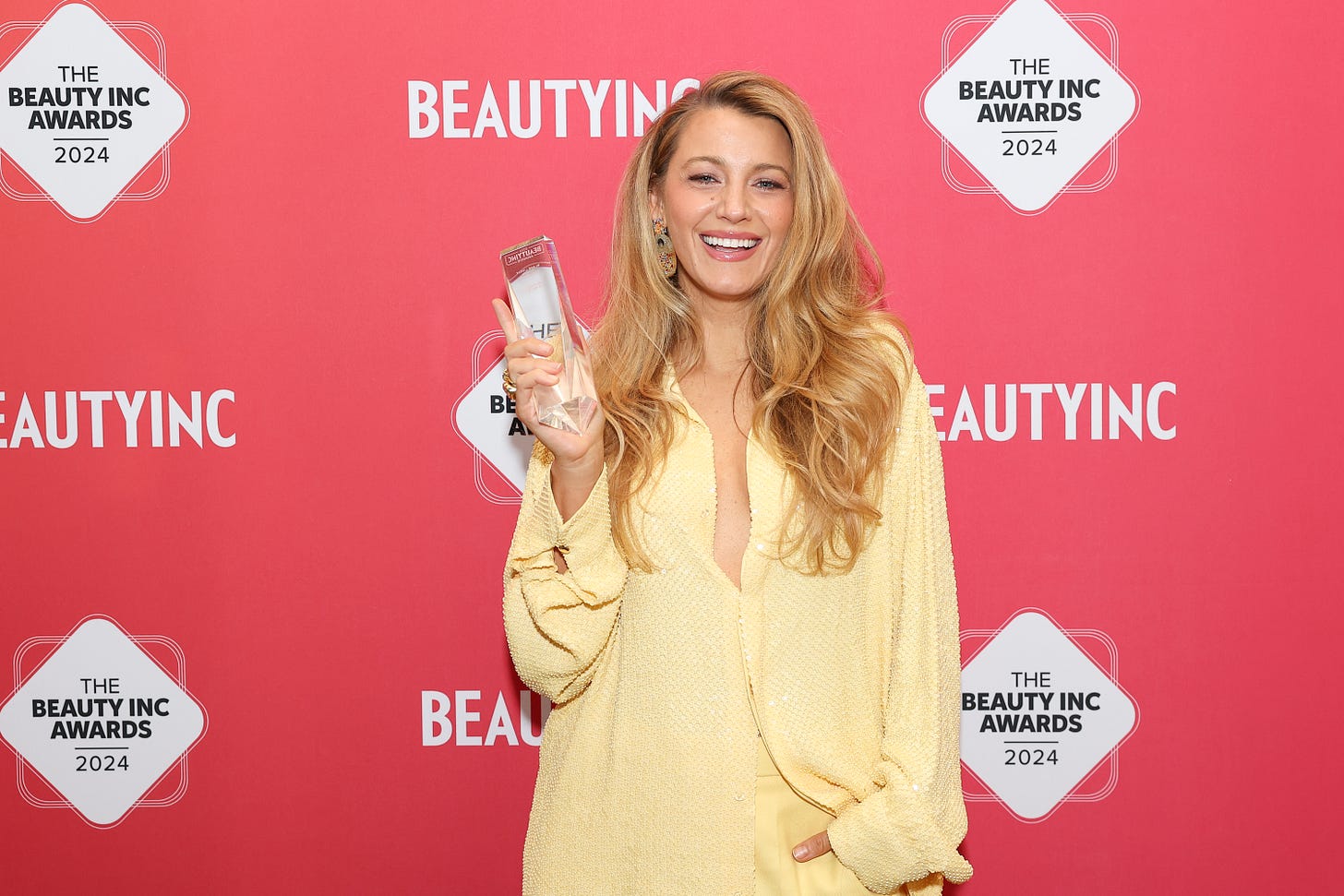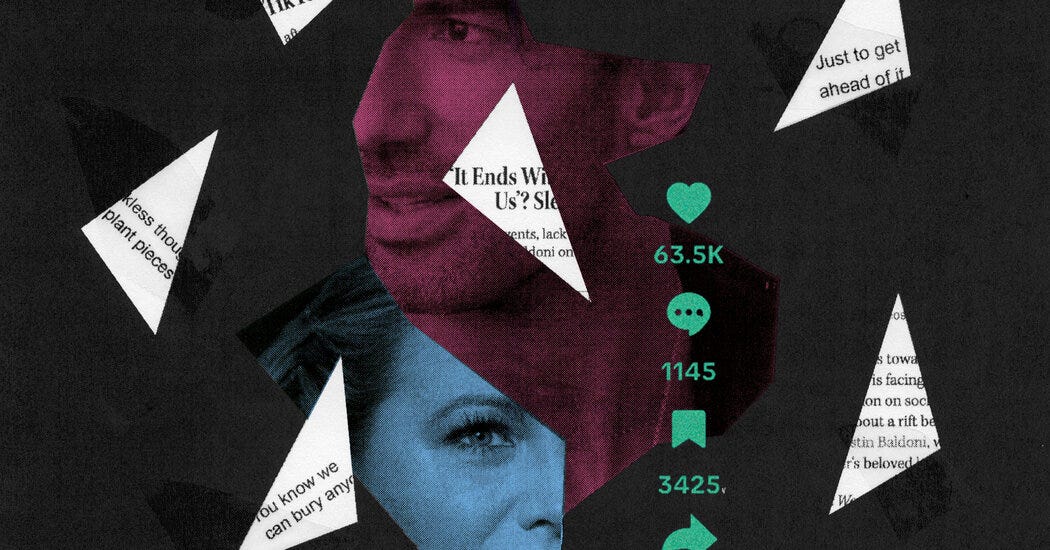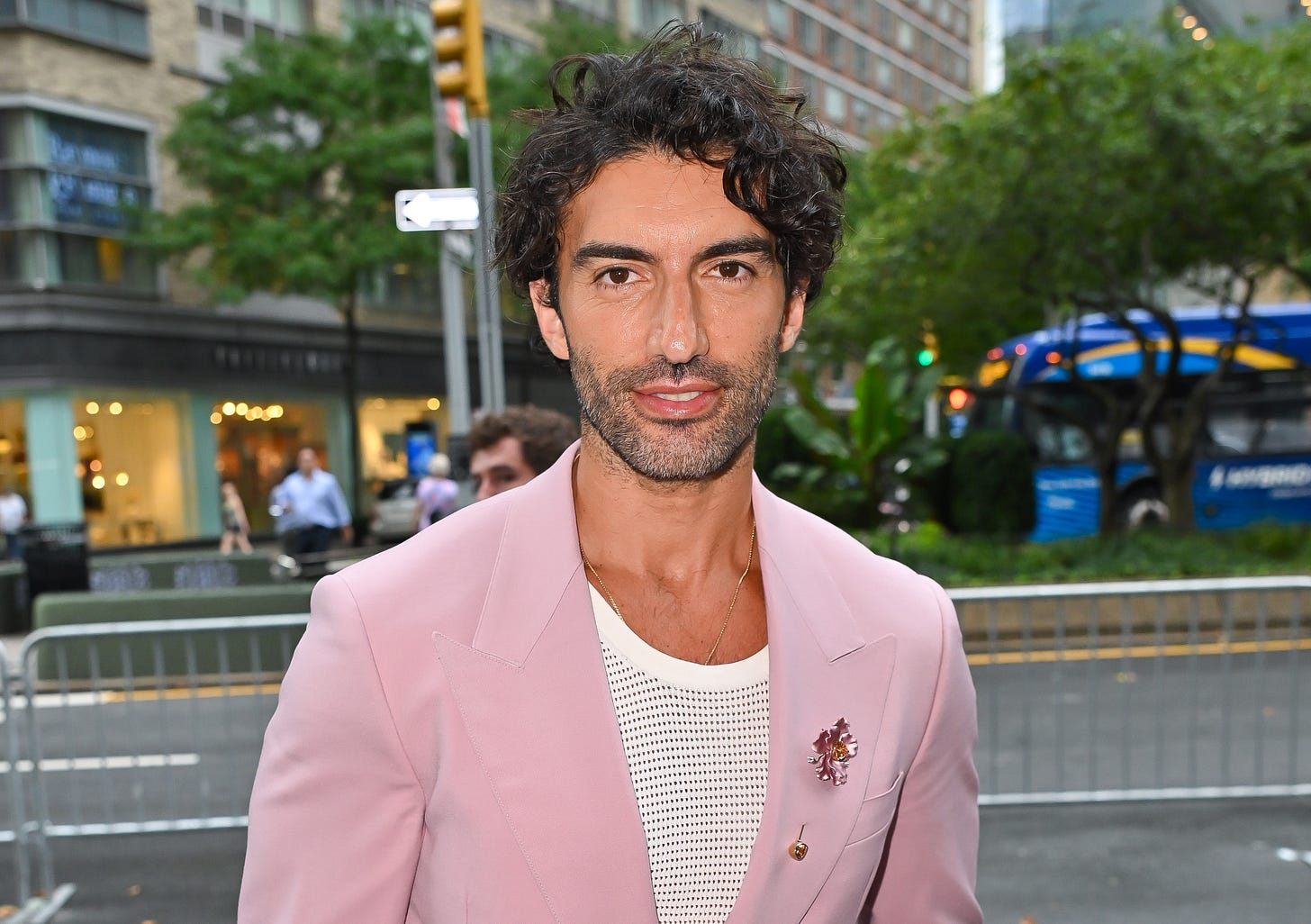Hydrogen Bomb vs. Coughing Baby
The incredibly messy and surprisingly never-ending It Ends With Us controversy, plus the big problem with AI disinformation
Misinformation and disinformation are back in the news, folks. Big shocker, I know.
Whether it’s Elon Musk tweeting his way into killing a congressional spending bill or the president-elect spreading misinformation that the New Orleans mass killer was an undocumented immigrant (he was not, he was a U.S. army vet), it seems that the world is being run by the most dishonest bad faith actors imaginable.
We’re even seeing it in our elections, with President Biden announcing a new set of sanctions on Russia and Iran, accusing them of attempting to interfere with the last presidential election by spreading AI disinformation and propaganda on social media. As reported by Naomi Lachance for Rolling Stone, the Center for Geopolitical Expertise, or CGE, out of Moscow coordinated with the Russian Main Intelligence Directorate, or GRU, to create videos containing baseless accusations against a vice presidential candidate that was likely Tim Walz.
Okay, those are pretty serious allegations. What is the U.S. doing about it? Well, according to the Treasury Department, the sanctions’ are not being directly placed on each country, but rather the organizations named. And the sanctions do the following:
“As a result of today’s action, all property and interests in property of the designated persons described above that are in the United States or in the possession or control of U.S. persons are blocked and must be reported to OFAC. In addition, any entities that are owned, directly or indirectly, individually or in the aggregate, 50 percent or more by one or more blocked persons are also blocked…In addition, financial institutions and other persons that engage in certain transactions or activities with the sanctioned individuals may expose themselves to sanctions or be subject to an enforcement action…Non-U.S. persons are also prohibited from causing or conspiring to cause U.S. persons to violate U.S. sanctions, wittingly or unwittingly, as well as engage in conduct that evades U.S. sanctions.”
…oh. So we discovered election interference from people not in the United States, and have basically said they’re screwed if they have assets in the U.S. or come into the U.S. In the meantime, it’s a big slap on the wrist. No word on recounts, or any commitment to fixing problems like these from arising again, but hey. If anybody from the, uh, CGE comes into America, we sure are gonna yell at them!
In fact, it seems like the AI disinfo problem is only going to get worse. While we await the Supreme Court’s ruling on the pending TikTok ban, Mark Zuckerberg has announced that Facebook and Instagram will soon by flooded by “hundreds of thousands” of AI-generated fake users that will have their own avatars, post their own content, and exist alongside we, the non-AI-generated plebes.
I’m sure we’ve all heard of The Dead Internet Theory. It’s listed on Wikipedia as a “conspiracy theory” that makes the case that “the Internet now consists mainly of bot activity and automatically generated content manipulated by algorithmic curation to control the population and minimize organic human activity.” It appears the theory originated on an obscure web forum back in 2021, and back then, the theory was interesting but a tad preposterous. This recent development from Zuckerberg, though? It reads like he used the post as a ROADMAP.
I don’t really know what we can do with this except ignore it, just like we do with every other AI “innovation” nobody asked for. Speaking to a fake Mr. Beast on Instagram? I’m good. Having my iPhone 16 summarize my friends’ text messages? Why? Inhabit the Metaverse? Inhabit my utter lack of care, Zuck. I don’t know when this is going to end, and when you look at the bigger picture - AI disinfo is real, the government doesn’t care, and the major social media NOT being banned is embracing it - it really looks a lot like disinfo is going to get a lot more annoying.
I’m trying my best to fight back against it; as I’ve mentioned, part of my strategy for facing the TikTok ban head on is creating a YouTube page that acts as a central hub for most of my content. I actually have a video coming out sometime this month that helps us know the difference between misinformation and disinformation, while also finding ways to combat it on our own terms. Even though the video isn’t directly about AI disinfo, it can at least help us all focus on the source of any information being fed to us. For instance - does the video exist only from a strangely named Instagram account that happens to “kinda” look like Mr. Beast, and that person ONLY seems to exist on Meta platforms?
Yeah, Joe, if it looks like bullshit, and it smells like bullshit, it probably came from Zuckerberg’s artificially inflated ass.
-
You know, with the way our attention spans have decayed over the last few years, movies don’t usually have the staying power they once did.
There are exceptions. Most of us remember fighting in the great Barbenheimer war of 2023. Black Panther remains one of the most fondly remembered Marvel films in a franchise that often blurs together. Minions are an inescapable fact of life for parents and Under the Desk News researchers everywhere. And it’s incredibly likely that Wicked, the current titan it is, will go down not only as a massive box office hit, but a cultural touchstone for parents and children alike.

But there are unusual cases every now and then where a film is remembered less for what it IS than something it represents. Perhaps you’ve been following the ongoing Rust controversy, where Alec Baldwin fired a live round from what was supposed to be a prop gun and killed cinematographer Halyna Hutchins. Or maybe you followed the production woes of Bohemian Rhapsody, which saw director Bryan Singer be fired for “unexpected unavailability,” coincidentally just a few days before he was sued for the sexual assault of a minor. Funny how that works.
Or even back in 1983, Steven Spielberg produced a Twilight Zone movie that saw famous directors of the day adapt multiple episodes of the show into an anthology. Few remember the film, or that Spielberg, Gremlins director Joe Dante, and Mad Max director George Miller directed segments. But if you remember the film today, it’s likely due to director John Landis irresponsibly filming a helicopter chase scene at night when he was informed it was unsafe, resulting in the helicopter crashing and ending the lives of character actor Vic Morrow and (illegally hired) child actors Myca Dinh Le (age 7) and Renee Shin-Yi Chen (age 6).
These are all pretty serious situations, though, so for many of you out there who aren’t keyed into what’s going on in Hollywood, you might be wondering why the cover photo for this article is related to a romantic drama from August of last year that got middling reviews at best. It Ends With Us, an adaptation of the novel by Colleen Hoover starring Blake Lively and Justin Baldoni, very likely would have came and went had it not been for the incredibly messy news surrounding its behind-the-scenes controversies.
Because you see, if you didn’t know, last summer’s accusations of Blake Lively being a “mean girl” who downplays serious discussions of domestic abuse, while also being accused of being a racist or a transphobe or a misogynist… have actually morphed into a larger story where Blake Lively, through a lawsuit, is accusing Justin Baldoni and his PR team of a social media smear campaign meant to tarnish her reputation, not unlike the one that his PR team did for - get this - Johnny Depp. Even more troublingly, she’s accusing Baldoni of sexual harassment.
Since then, Baldoni has filed his own countersuit against the New York Times, who broke the story about Lively’s allegations - a development that looks to muddy the waters in an intensely troubling way. Because make no mistake, ALL of these controversies are very serious - and likely spell out a pattern of manipulation we’ve seen time and again in the media, especially when it comes to famous women, and it’s pretty important we look at how this happened.
The context: back in August, social media was on fire due to a number of tone deaf moments involving Blake Lively while she spoke on the press circuit for the film. “Grab your friends, wear your florals, and head out to see [It Ends With Us],” she said in one viral clip, regarding a film about domestic violence. Which was a topic people also began to notice she wasn’t speaking about with the press, either, while co-star Justin Baldoni was.
This led to a number of reports of Blake being “difficult” and a “control freak” who butted heads with Baldoni on the film. Predictably, this led to a massive uptick in content focusing on Blake being a “mean girl.” Social media investigators noticed she didn’t follow any of her co-stars from Gossip Girl, and people dug up old comments about Blake not getting along with her co-stars. There were even multiple instances of Blake having used transphobic language in the 2000s that began to reappear.
Though in hindsight, the second people began citing an old interview where ARMIE HAMMER seems to imply Blake Lively was problematic, we should have known something was up. Because everything that was happening at the time felt really… off. As a content creator, I’m no stranger to seeing viral overreactions become the story du jour. The great Selena Gomez and Hailey Bieber “feud.” The feverish speculation on the whereabouts of Kate Middleton. Are we all still obsessed with the nine-month Ultimate World Cruise being some kind of TikTok reality show?
Though to be fair, there were a few important conversations happening during the big Blake Lively controversy. It was reported that Blake subtly defended Harvey Weinstein during the height of the #MeToo movement. And people began to realize that the “stunning” Mount Pleasant wedding she and Ryan Reynolds had… was held on a plantation. Devoid of context, these are important things that Blake could and should address… but it often seemed to come at the expense of uplifting Justin Baldoni as a “virtuous man,” with many commenters pointing towards him as a man that was “doing the work” to shed himself of toxic masculinity.
So there it was. The It Ends with Us controversy ended with the picture of a well-meaning man who just wanted to make a film advocating for survivors of domestic abuse, and Blake Lively was the clueless mean girl who had something else in mind. That was the story everybody decided to run with, until the drama died down and everybody went on with their lives.
Well, everybody except Blake Lively, who immediately got to work gathering receipts. And on December 20, 2021, those receipts came to light in a lawsuit known as “Blake Lively v. Wayfarer Studios LLC et al,” which was further contextualized by a bombshell piece by Megan Twohey, Mike McIntire, and Julie Tate for the New York Times titled, “‘We Can Bury Anyone’: Inside a Hollywood Smear Machine.”
I highly suggest reading the legal complaint and accompanying article in full, but to briefly summarize, Blake Lively makes the compelling case that much of the drama that happened during the summer of 2024 was a coordinated effort by Justin Baldoni and crisis management expert Melissa Nathan - whose former clients include Johnny Depp and Drake. The lawsuit doesn’t consist of blanket accusations, though: “Her filing includes excerpts from thousands of pages of text messages and emails that she obtained through a subpoena,” states the Times.
These were texts between Melissa Nathan, a publicist for Baldoni’s production company Wayfarer Studios, and Jed Wallace, who the Times describe only as a “hired gun” - all of whom paint a picture of finding ways to amplify negative stories about Lively online and bury any potential negative stories about Baldoni. Stories like how Baldoni allegedly tried to add gratuitous sex scenes to a film whose script and book didn’t have them, or
One of the biggest stories that was allegedly buried was the impetus for the alleged smear campaign. As the Times puts it:
“During shooting, Blake Lively, the co-star, had complained that [Baldoni and Jamey Heath, lead producer] had repeatedly violated physical boundaries and made sexual and other inappropriate comments to her. Their studio, Wayfarer, agreed to provide a full-time intimacy coordinator, bring in an outside producer and put other safeguards on set. In a side letter to Ms. Lively’s contract, signed by Mr. Heath, the studio also agreed not to retaliate against the actress.”
To describe that in less words: sexual harassment. Blake Lively is alleging that Baldoni sexually harassed her. This is paired with additional allegations that Baldoni improvised “unwanted kissing” in scenes with her and allegedly told unsolicited stories of his sex life - including stories that “he said he may not have received consent” for. Alongside allegations that Baldoni would burst into her dressing room while she was changing or breastfeeding, or showing Lively nude videos of his wife, the lawsuit paints the picture of a deeply depraved experience that isn’t at all in lockstep with the prior version of events.
It was this set of allegations, though, that inspired Wayfarer Studios to, allegedly, hire a crisis management expert to get ahead of any potential allegations. Wayfarer provided a statement to The Times stating that nobody involved “did [anything] proactive nor retaliated” against Lively, and tried to pull an Uno Reverse card stating that it was LIVELY, in fact, who was running a baseless smear campaign.
Which, in a world where the truth can often be found in more neutral spaces, COULD be true. Except this lawsuit contains text message, after text message, after text message of this public relations team plotting to kill bad coverage of Baldoni and amplify negative coverage of Lively. For example, a section of the lawsuit details how Wayfarer Studios’ promotion plan for the film was for the cast to focus on more uplifting, floral imagery that downplayed the domestic violence in the film’s plot. The text messages obtained paint a picture of Baldoni’s team identifying this backlash, and having him go rogue, without informing Lively, to begin uplifting survivors while he was doing press for the film.
Where this gets even messier is that on December 31, Baldoni filed his own $250 million countersuit… against the New York Times, for “libel and false light invasion of privacy,” according to an article by Tatiana Segel for Variety.
In THIS article, it’s alleged that the Times “cherry-picked” and “altered” communications, out of context, to deliberately “mislead” and spread a narrative they argue is false. Much lime Lively’s lawsuit, this filing is filled with text message screenshots and explosive allegations, such as falsifying “sexual harassment allegations to assert unilateral control over every aspect of the production” and also, strangely, allegations that Ryan Reynolds aggressively confronted Baldoni for “fat shaming” Lively, which… uh, good?
What IS interesting is that the suit, to be fair, does seem to provide additional context to many of the screenshots, showing that exchanges where Nathan and her team were discussing smearing Lively were intended as jokes, with the additional screenshots showing the team marveling over the Lively hate campaign spreading organically - NOT as a result of their work. What isn’t accounted for, however, are the countless screenshots in the Times’ piece of Baldoni asking for negative press to be buried.
It might be interesting to note that if we take the entire picture of what Lively is presenting, and what Baldoni is presenting… it ACTUALLY seems to paint a picture that Melissa Nathan et al is, actually, very bad at her job, and she struck gold by taking on a client who wanted to smear a woman who accused him of sexual harassment that the public already wanted to hate? And that’s the BEST case scenario for Baldoni!
One of the central claims in Baldoni’s countersuit is that him being dropped by his agency WME came at the insistence of Ryan Reynolds - a claim WME has already publicly disputed.
Now, these are all allegations as of me writing this, of course, but I think this kind of peek behind the curtain is especially important for us to get as we begin navigating a new reality. It’s not just artificial intelligence that can fool us, and it’s not just blatant mis- or disinformation: sometimes, a narrative develops via a combination of “the louder voices being louder” and straight up lies by omission. I was watching a video on YouTube recently that made reference to a meme I’d completely forgotten about: the hydrogen bomb vs. the coughing baby.
I mean, it sounds like a pretty funny concept I hadn’t thought about too deeply.
It’s almost too patently ridiculous on the surface to engage with… until you do.
One is a little concerning, possibly even a little annoying… and the other is a legitimate threat to public health. On a deeper philosophical level, that’s how you can look at the allegations being levied against Blake Lively and the allegations being levied against Justin Baldoni. Blake Lively is the “coughing baby,” an alleged mean girl who has said and done some pretty questionable things she should have to answer for (I am not saying babies need to answer for coughing, grow up). It’s also quite telling who the coughing baby’s supporters are, with numerous co-stars and even author Colleen Hoover coming to support Lively.
But Justin Baldoni, allegedly, is the hydrogen bomb: with a massive fortune, a powerful PR team, his own studio, and the added benefit of presenting as a “nice guy” paired up against the much more prickly, in comparison, Blake Lively. He’s been accused of repeated sexual harassment and literally manufacturing a smear campaign against a woman so she wouldn’t tell anybody about said sexual harassment.
Far too often, when faced with both the hydrogen bomb and the coughing baby, we hear the same old chorus from a song that sounds very familiar: “they both suck.”
And I think it’s time we start asking ourselves whether it’s even acceptable for us to put the hydrogen bomb and the coughing baby in the same category at all.


